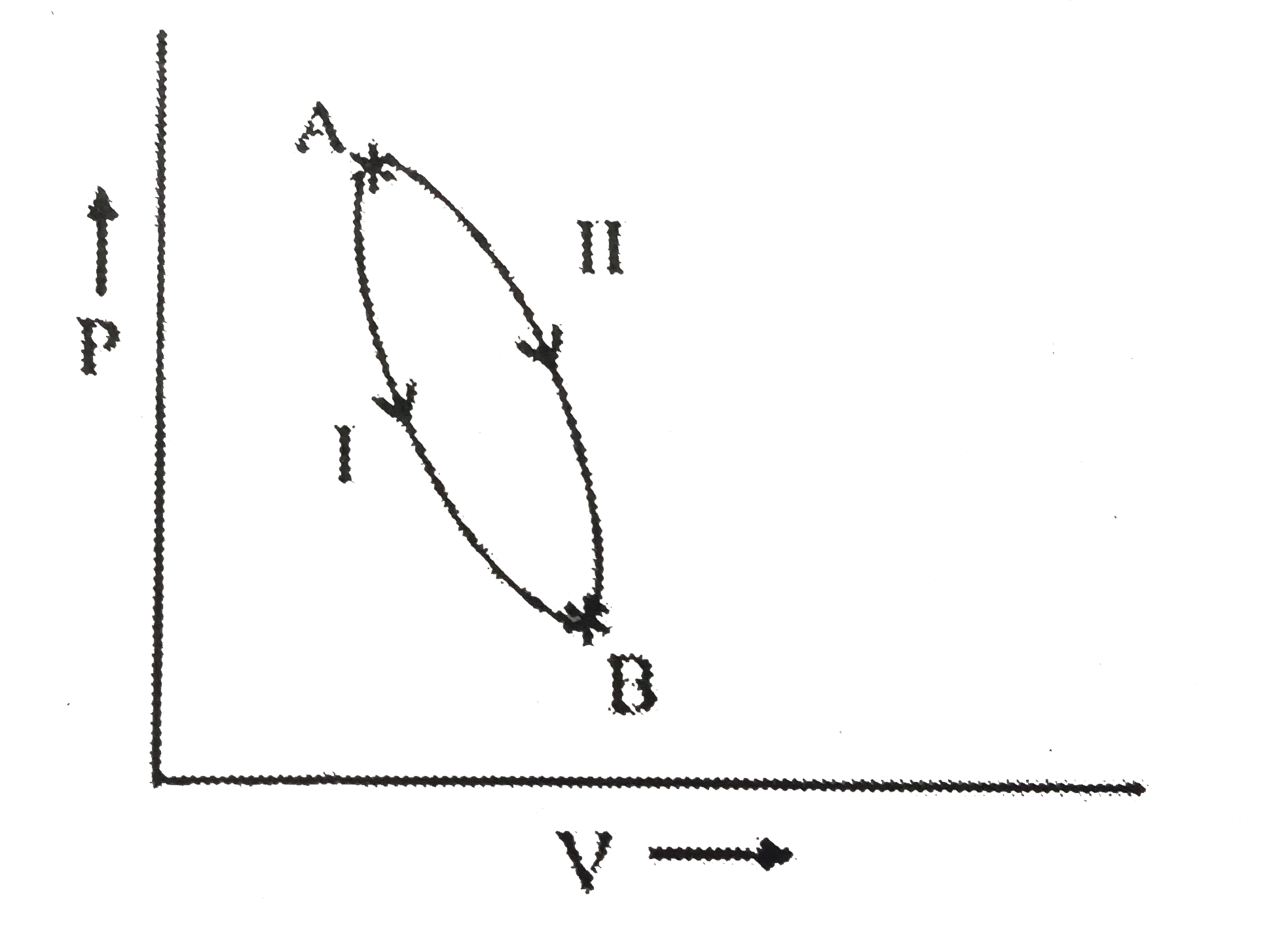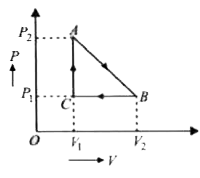A gaseous system undergo a change of state from (1) to (2) by any of the given path -I or path-II as shown in figure

As per path-I, Δq=−400 cal and Δq=−48cal
Therefore work done, ΔW in path -(II) is-
−338cals
−366cals
−434cals
−462cals
The correct Answer is:1
For path−IΔEI=Δq+ΔW=−400+14
=-386 cals
For path-II, ΔEII=ΔEI=−48+ΔW
∴ΔW=−386+48=−338cal
Topper's Solved these Questions
Similar Questions
Knowledge Check
Work done by the system in closed path ABCA, as shown in figure is
 AzeroB(V1−V2)(P1−P2)C(P2−P1)(V2−V1)2D(P2+P1)(V2−V1)2
AzeroB(V1−V2)(P1−P2)C(P2−P1)(V2−V1)2D(P2+P1)(V2−V1)2An ideal gas undergoes change in its state from the initial state I to the final state F via two possible paths as shown. Then
 Athere is no change in internal energy along path 1Bheat is not absorbed by the gas in both pathsCthe temperature of the gas first increases and then decreases for path 2Dwork done by the gas is larger in path 1.
Athere is no change in internal energy along path 1Bheat is not absorbed by the gas in both pathsCthe temperature of the gas first increases and then decreases for path 2Dwork done by the gas is larger in path 1.In the given figure, an ideal gas changes its state from A to C by four paths. The path for which work done is least, is
 AABCBAECCADEDAFC
AABCBAECCADEDAFC
The figure shows two paths for the change of state of a gas from A to B. The ratio of molar heat capacities in path 1 and path 2 is

View SolutionA system goes from P to Q by two different paths in the P−V diagram as shown in (figure). Heat given to the system in path 1 is 1000J. The work done by the system along path 1 is more than path 2 by 100J. What is the exchange by the system in path 2?

View SolutionAn ideal gas undergoing a change of state from A to B through four different paths I, II,III and IV as shown in the P-V diagram that lead to the same change of state tyhen the change in internal energy is

View SolutionThe figure shows two paths for the change of state of a gas from A to B. The ratio of molar heat capacities in path 1 and path 2 is

View SolutionA system is taken from state A to B through three different paths 1,2 and 3. The work done is maximum is :

View Solution
